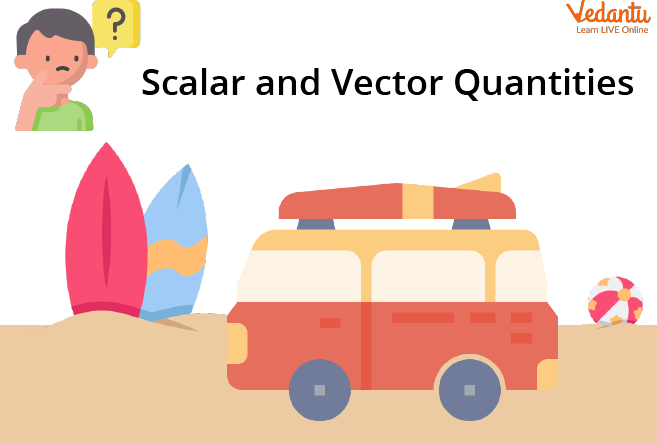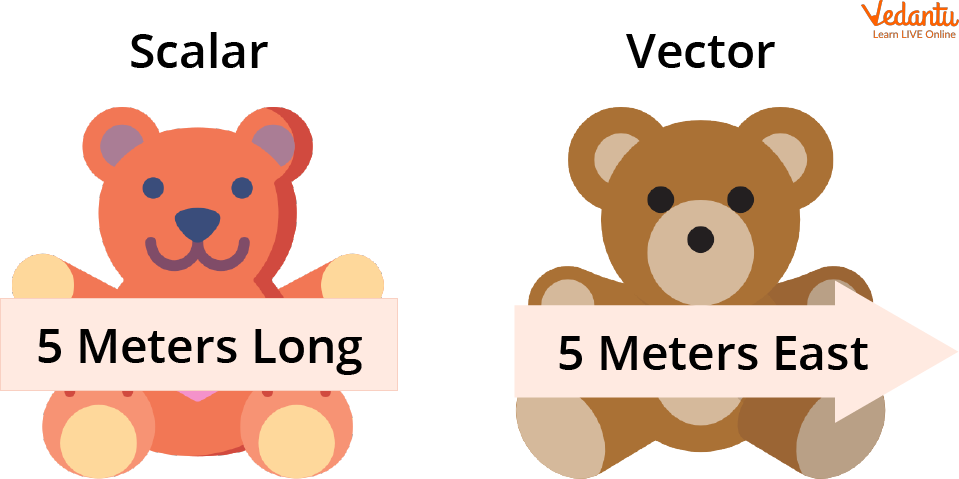




Difference Between Scalar and Vector Quantities with Practical Examples
Today we are here with a very important and interesting topic: scalar and vector quantity. Scalar Quantity: It is the physical quantity in the natural world. Scalars are physical quantities that simply have a size or a numerical value (magnitude). You can determine the quantity of something using a scalar.
Vector Quantity: A physical quantity with a direction and magnitude is called a vector. As vectors are physical quantities with size as well as direction, they are different from other types of quantities. Using a vector, we can determine the direction of a physical quantity. In this article, displacement and its examples will also be discussed.

Scalar and Vector Quantities
What are Scalar and Vector Quantities?
In physics, scalar and vector are the physical quantities. It is a quantity that may be completely explained with only one magnitude. Just one number may be used to describe it. The scalar quantity does not contain direction. In other words, a scalar is a quantity measure.
A physical quantity that has both direction and magnitude is called a vector. It is generally represented by an arrow. Even if a vector quantity has both magnitude and direction then also it does not have a position. There is always a beginning point and an ending point for a vector quantity.

Depiction of Scalar and Vector
Scalar and Vector Quantity Examples
Examples of Scalar Quantities
If a tower's height is 15 metres, then that tower's height is a scalar number since it only requires the magnitude of height to define itself.
If a task takes 8 hours to complete, everything that is needed to express time in this situation is the magnitude of 8 hours.
Weight, distance, time, power, volume, temperature, work, etc.
Examples of Vector Quantities
A man is cycling in the southeast direction at a speed of 30 km/h.
The football player was running into the goal line at a speed of 10 km/h.
The following terms: displacement, acceleration, force, and momentum are examples of a vector quantity.
Difference Between Scalar and Vector Quantities
The following are the scalar and vector quantity differences:
Displacement Scalar or Vector
Displacement is a vector quantity. It is a vector quantity because it contains both magnitude and direction. The smallest distance that an object travels between its starting point and its endpoint in a given amount of time is known as displacement.
The definition of displacement is the modification of an object's location. It is a vector quantity with a magnitude and direction. The symbol for it is an arrow pointing from the initial position to the ending position. It is the shortest path of an object. As an example, the position of an object changes if it moves from position A to position B. Displacement is the name for this change in an object's position.
Summary
In this article, scalar and vector quantities were discussed. In physics, scalar and vector are the physical quantities in the natural world. Scalars are physical quantities that simply have a size or a numerical value (magnitude). You can determine the quantity of something using a scalar. Differences between scalar and vector quantities have also been discussed. Examples of scalar and vector quantities have been also discussed that will help you a lot in understanding this topic easily.
FAQs on Scalar and Vector Quantity Made Simple
1. Is time a scalar quantity?
Time is defined as a scalar quantity. Since time may be described using the simple magnitude.
2. Is current density a vector?
Current density is a vector quantity because it's a product of charge density and velocity; here charge density is a scalar quantity and velocity is a vector quantity, which makes current density also a vector quantity.
3. What purpose do vectors serve in physics?
Physics heavily depends on vectors. Vectors can be used to represent a body's forces, acceleration, and velocity. There are many additional physical values that can be regarded as vectors. The direction of an arrow and its length can still be used to indicate their directions and magnitude even when the majority of them do not indicate distance. The coordinate system used to describe physical vectors affects how they are mathematically described. When two vectors are joined together the consequence of both vectors is shown (a + b = c).









